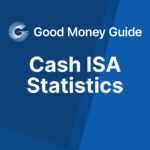The great thing about a flexible stocks & shares ISA is that unlike normal ISAs you can take the money out if you need itthen put it back again without lowering your overall yearly allowance. This applies as long as the money is moved and replaced in the same tax year, which in the UK always starts on 6th April and ends on 5th April the following year.
Which providers offer the best flexible ISA rates?
In our comparison of flexible ISA accounts you can see if they are Cash ISAs or Stocks & Shares ISAs and if there are any restrictions. For the flexible stocks and shares ISA rate comparison, we have stated the interest received on uninvested cash.
| Flexible ISA Provider | Best Interest Rate | Flexible ISA Type | Restrictions |
|---|---|---|---|
| AJ Bell | 2.05% | Stocks & shares | None |
| Aldermore | 4.4% | Cash | None |
| Bank of Scotland | 1.15% | Cash | Variable ISAs only |
| Barclays Smart Investor | 4% | Cash, Stocks & shares | None |
| Bestinvest | 3.95% | Stocks & shares | None |
| Charles Stanley Direct | 2.27% | Stocks & shares | None |
| CMC Invest UK | 2% | Stocks & shares | None |
| Coventry Building Society | 2.95% | Cash | Easy-access ISA only |
| Ford Money | 4.35% | Cash | ISA Variable Saver only |
| Halifax | 1.6% | Cash | ISA Saver Variable only |
| IG | 0% | Stocks & shares | None |
| Lloyds | 1.6% | Cash | None |
| Lightyear | 4.5% | Cash | None |
| Metro Bank | 1.15% | Cash | Instant Access Cash ISA only |
| Nationwide | 1.8% | Cash | None |
| Newcastle Building Society | 2.7% | Cash | None |
| Paragon Bank | 4% | Cash | Triple Access Cash ISA only |
| Principality Building Society | 3.1% | Cash | Easy Cash ISAs only |
| Redmayne Bentley | 2.25% | Stocks & shares | None |
| Skipton Building Society | 3.3% | Cash | Easy Access only |
| Tesco | 3.95% | Cash | Instant Access Cash ISA only |
| Vanguard | 2.35% | Stocks & shares | None |
| Virgin Money | 1% | Cash | Easy-access ISAs only |
| XTB | 4.75% | Stocks & shares | None |
What are flexible stocks & shares ISAs?
Flexible ISAs were introduced in April 2016. They were designed to give ISA savers more freedom about how they use their allowance.
For example, for the current 2025-2026 tax year the ISA allowance is £20,000.
Say you put in £15,000 during the tax year. You then take out £5,000.
If your ISA is flexible the amount you can now put in during the same tax year is £10,000 (the remaining allowance of £5,000 plus the £5,000 you took out).
Any money you take out of a flexible ISA must go back into the same ISA.
However, you can move money between the three types of flexible ISA; flexible cash, flexible stocks and shares and flexible innovative finance.
Your provider can tell you if your ISA is flexible.
Like all ISAs, money inside a flexible ISA grows free of any taxes.
- Related guide – best ISA offers for switching provider
How do flexible ISAs differ from non-flexible ISAs?
Flexible ISAs give you more choice in how you use your annual ISA allowance.
With a non-flexible ISA, if you take money out during the tax year you will lose that amount from your allowance.
For example, your allowance is £20,000 and you put £15,000 into an ISA during the 2022 to 2023 tax year.
You then take out £5,000.
With a non-flexible ISA the amount you can now put in during the same tax year is £5,000, just the remaining allowance.
With a standard stocks & shares ISA, some people may choose not to invest, fearing their money will be locked away.
On the other hand, investors who don’t have a flexible account may resist redeeming their money – even if they need it – so as not to impact their £20,000 allowance.
Albert Soleiman, Head of CMC Invest UK, an investment platform, says there aren’t any negative trade-offs when it comes to selecting a flexible ISA over a standard ISA.
He says: “Not all providers, however, offer flexible accounts. If you want the benefits of flexibility, therefore, you need to make sure this is an option with your chosen provider.
If you already have an ISA and it’s not flexible, you may want to consider transferring to a new provider in order to take advantage of flexibility.”
What you can invest in a flexible ISA?
Flexible ISAs are available as cash, stocks & shares and innovative finance ISAs.
Flexible stocks & shares ISAs can invest in any of the investments a normal stocks and shares ISA can invest in. This can include bonds, individual company shares, and investment funds.
Flexible innovative finance ISAs have a broader range of investments you can invest in, based around peer-to-peer lending and crowdfunding. These investments can be riskier.
Flexible cash ISAs only allow you to put your money into cash savings products.
What is the best way to use a flexible ISA as part of your investing plan?
Using a flexible stocks & shares ISA to invest in a variety of assets for the long-term makes sense for many investors.
This may be investing for a house or car or building a fund for later in life.
Albert Soleiman, head of CMC Invest UK, says during times like the present, when inflation and interest rates are high, having long-term goals can help you make the right decisions.
He says: “Focusing on your long term goals can help you make the best use of your flexible stocks & shares ISA without making a hasty decision based on market turbulence.
If, however, you have a sudden need to withdraw money, knowing you have the freedom to do so without harming your annual ISA allowance offers just that little bit more peace of mind.”
Can you take money out of a flexible ISA and put it in a different ISA?
You can only take money out and put it back into the same flexible ISA, if you put it into another ISA it will be deducted from your annual ISA allowance when it resets.
Pros and cons of a flexible ISA
Pros
- A flexible ISA can help provide you access to your cash when you need it most – for a life event such as building expenses for example
- You can access your cash in the short-term then put it back without derailing your longer term saving plans
- Like all ISAs, any gains you make in a flexible ISA are free of tax.
Cons
- Flexible ISAs are only available as stocks and shares, cash and innovative finance ISAs. Lifetime ISAs and junior ISAs are not available in flexible options
- Not all providers offer flexible ISAs so the choice is a bit more limited than for non-flexible ISAs.

Richard is the founder of the Good Money Guide (formerly Good Broker Guide), one of the original investment comparison sites established in 2015. With a career spanning two decades as a broker, he brings extensive expertise and knowledge to the financial landscape.
Having worked as a broker at Investors Intelligence and a multi-asset derivatives broker at MF Global (Man Financial), Richard has acquired substantial experience in the industry. His career began as a private client stockbroker at Walker Crips and Phillip Securities (now King and Shaxson), following internships on the NYMEX oil trading floor in New York and London IPE in 2001 and 2000.
Richard’s contributions and expertise have been recognized by respected publications such as The Sunday Times, BusinessInsider, Yahoo Finance, BusinessNews.org.uk, Master Investor, Wealth Briefing, iNews, and The FT, among many others.
Under Richard’s leadership, the Good Money Guide has evolved into a valuable destination for comprehensive information and expert guidance, specialising in trading, investment, and currency exchange. His commitment to delivering high-quality insights has solidified the Good Money Guide’s standing as a well-respected resource for both customers and industry colleagues.
To contact Richard, please ask a question in our financial discussion forum.




